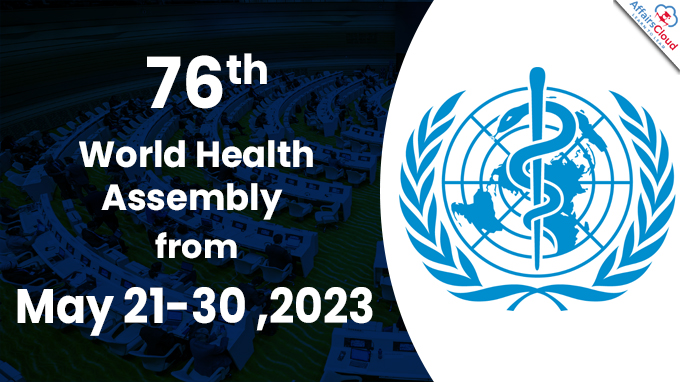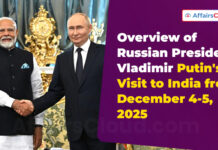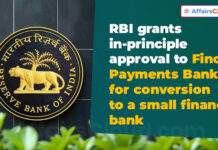 The 76th annual World Health Assembly held in Geneva, Switzerland, from 21 to 30 May 2023.
The 76th annual World Health Assembly held in Geneva, Switzerland, from 21 to 30 May 2023.
- The theme of this 2023’s Health Assembly is: WHO at 75: Saving lives, driving health for all.
- Union Minister Mansukh Mandaviya, Ministry of Health and Family Welfare, represented India in the 76th World Health Assembly.
Highlights of the World Health Assembly Meetings & Decisions
-Taiwan Excluded from World Health Assembly
The World Health Assembly not extended Taiwan an invitation to the event and it was excluded due to the Chinese opposition.
- China and Pakistan urged members to reject Taiwan’s inclusion while Eswatini and the Marshall Islands supported Taiwan’s inclusion.
- China claims sovereignty over Taiwan and says the island is not a separate country but part of “one China” governed by Beijing.
-Union Health Minister Address Event at World Health Assembly
Union Minister Mansukh Mandaviya delivered the keynote address at a side event session on ‘Heal in India & Heal by India’ and ‘Together we fight against TB’ at the 76th World Health Assembly, reiterating India’s contribution in the field of Medical Value Travel and India’s resolve to eliminate Tuberculosis from India by 2025.
- Mansukh Mandaviya was joined by S Gopalakrishnan, Special Secretary, Ministry of Health and Family Welfare.
Keynote at Heal in India & Heal by India Session:
i.The ‘Heal by India’ initiative is designed to increase health workforce mobility from India to different parts of the world to serve the world as per the Indian Philosophy of ‘Vasudhaiva Kutumbakam’ (The World is One Family).
ii.Mansukh Mandaviya stated that India is home to the world’s oldest medical system of Ayurveda and India has promoted the AYUSH treatment due to the increase in demand across the world for AYUSH (Ayurveda, Yoga, Siddha, Unani, and Homeopathy) treatments.
iii.He highlighted India’s G20 Presidency philosophy of “One Earth, One Family, One Future”, and reiterated that under the G20 Health Track, India has prioritized Health Emergencies, Prevention, Preparedness and Response with a focus on One Health and Anti-Microbial Resistance (AMR).
iv.COVID vaccination: More than 2.20 billion doses have already been administered in India so far under COVID vaccination and millions of vaccines were shared with the world through the ‘Vaccine Maitri’ initiative.
v.He also mentioned that India has launched the World’s largest Government funded health insurance scheme – Ayushman Bharat Pradhan Mantri Jan Arogya Yojana (AB PM- JAY) in 2018 to cover all aspects of healthcare in the nation.
- Around 1,50,000 Ayushman Bharat Health and Wellness Centres (AB-HWCs) are transforming the delivery of comprehensive primary health care services in India.
- Ayushman Bharat Digital Mission (ABDM) bridge the gap among different stakeholders of the healthcare ecosystem through the usage of technology.
- The disease surveillance system, laboratory networks, and infectious disease blocks are built under PM-Ayushman Bharat Health Infrastructure Mission across the country to augment research capacity.
vi.He reiterated that ‘Healthcare for All’ is aligned with “Sabka Sath, Sabka Vikas & Sabka Prayas”, meaning ”striving together, through collective efforts towards an inclusive growth”.
-PM Modi’s Video Message at World Health Assembly:
In his video message at the 76th session of the World Health Assembly, Prime Minister (PM) Narendra Modi stated that during the COVID-19 pandemic, India has shipped almost 300 million vaccine doses to more than 100 countries with most of them from the Global South.
- He highlighted the need to improve global health equity and equal access to resources.
- PM Modi mentioned that WHO’s first Global Centre for Traditional Medicine is being established in India.
- He affirmed India’s support to WHO in creating availability, accessibility and affordability of healthcare in low- and middle-income countries.
-Existence of Threat of an even deadlier pathogen
i.While addressing the 76th World Health Assembly, WHO Director-general Dr Tedros Adhanom Ghebreyesus stated that the threat of another variant emerging that causes new surges of disease and death remains with even deadlier potential.
ii.He stated that the end of COVID-19 as a global health emergency is not the end of COVID-19 as a global health threat.
iii.He reported that countries have made progress on universal health coverage, with some 477 million people now benefitting.
iv.He highlighted several achievements that have been made over 2022 in what he called the “five Ps”: promoting, providing, protecting, powering, and performing for health.
v.Action on Health Care: Between 2017 and 2022, 133 governments increased or introduced a new tax on products that harm health, such as tobacco and sugary drinks.
vi.On protection, Tedros noted that following an all-time low of five wild poliovirus cases in 2021, numbers increased in 2022, with 20 cases in Pakistan, two in Afghanistan, and eight in Mozambique.
-Progress of Global Strategy for Women’s, Children’s and Adolescent Health
i.The World Health Assembly delegates discussed progress against the Global Strategy for Women’s, Children’s and Adolescent Health (2016-2030).
ii.WHO Director-General Tedros Adhanom Ghebreyesus’s report on the Strategy presented to the World Health Assembly expressed that maternal mortality rates have stagnated since 2016.
- As per the report, if the current trends continue, 54 countries will fall short of meeting the Sustainable Development Goal (SDG) target for under-five mortality and 63 countries will not achieve the SDG target for neonatal mortality.
About the Global Strategy for Women’s, Children’s and Adolescents’ Health (2016–2030):
i.It is a bold roadmap for ending all preventable maternal, newborn and child deaths, including stillbirths, by 2030, and improving their overall health and well-being.
ii.This Global Strategy includes a monitoring framework with 60 indicators, (of which 16 are key) to help countries and their partners promote accountability in ending preventable deaths (“Survive”), ensuring health and well-being (“Thrive”), and expanding enabling environments so that all women, children, and adolescents can reach their potential (“Transform”) and no one is “Left Behind”.
-WHO’s Programme Budget for 2024-2025
i.Member States of WHO agreed to the WHO’s Programme Budget of USD 6.83-billion for the next two years 2024-2025, which shows a historical 20% increase in assessed contributions (membership fees).
- Investing in WHO returns USD 35 for every USD 1 invested.
ii.With the increased assessed contributions, Member States would contribute US$ 1148.3 million towards the budget with their membership fees. The rest, USD 5685.8 million will be covered by voluntary contributions made by Member States and other contributors.
Other Highlights:
- At the Strategic Roundtable discussion was held on Protecting and investing in the health and care workforce
- The global health workforce shortage has been declining significantly from 18 million in 2013 to 15 million in 2020 and is projected to be around 10 million by 2030.
-Sustainable financing: feasibility of a replenishment mechanism
Backdrop: The 75th World Health Assembly adopted the recommendations of the Working Group on Sustainable Financing, requesting WHO to explore the feasibility of a replenishment mechanism to broaden further the financing base.
i.In response, WHO submitted the report, an assessment of the feasibility of such replenishment mechanism in the 76th World Health Assembly.
ii.The report summarizes the analysis of the six principles that are to serve as the basis for considering a WHO replenishment mechanism and proposes the major elements of a first “WHO investment round” to implement such a mechanism in 2024.
iii.Member States adopted a decision welcoming the continued effort to sustainably finance WHO and requested a plan for the First Investment Round in 2024.
iv.As of 31 March 2023, the base programmes of WHO has a funding gap of USD 443.8 million, including projections of voluntary contributions.
v.The current gap is compounded by the challenge of persisting “pockets of poverty”, underscoring the urgent need for more sustainable financing.
Recent Related News:
On March 3, 2023, the Government of India (GoI) and the World Bank (WB) signed 2 complementary loans of $500 million Public Health Systems for Pandemic Preparedness Program (PHSPP) and $500 million Enhanced Health Service Delivery Program (EHSDP) to support and improve India’s healthcare infrastructure.
- The loan agreements were signed by Rajat Kumar Mishra, Additional Secretary, Department of Economic Affairs and Auguste Tano Kouamé, World Bank India country director.
About The World Health Assembly:
i.It is the decision-making body of the World Health Organization (WHO) and it is attended by delegations from all WHO Member States and focuses on a specific health agenda prepared by the Executive Board.
ii.The main functions of the World Health Assembly are to determine the policies of the Organization, appoint the Director-General, supervise financial policies, and review and approve the proposed programme budget.
iii.The Health Assembly is held annually in Geneva, Switzerland.




